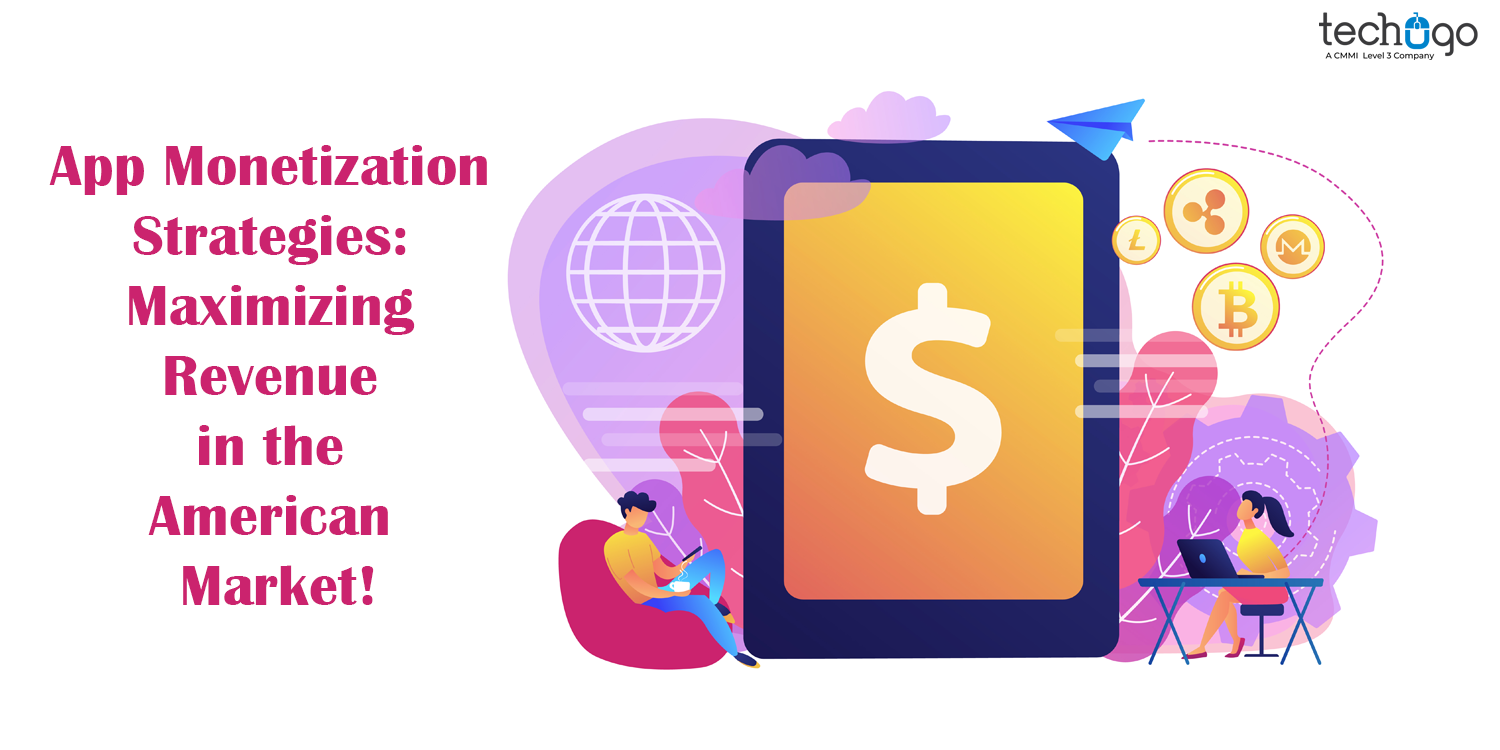
App Monetization Strategies: Maximizing Revenue in the American Market!
In the ever-evolving world of mobile app development, finding effective monetization strategies is a top priority for developers and entrepreneurs. The American market, with its massive user base and strong purchasing power, presents a unique landscape for app monetization. In this blog post, we will explore various monetization strategies that an app development company may integrate to help you maximize revenue in the American market.
Understanding the American App Market
Before delving into monetization strategies, it’s crucial to understand the American app market. The United States boasts one of the largest and most diverse app user bases globally, with millions of smartphone users across various age groups and demographics. This vast user pool offers substantial revenue potential, making it an attractive market for app developers.
1. Freemium Model
Overview:
The freemium model is a popular choice for app monetization, especially in the American market. This strategy involves offering a free version of your app with limited features and encouraging users to upgrade to a premium version for a fee.
Implementation:
Offer a basic version of your app for free, enticing users with its core functionality. To maximize revenue, provide premium features, additional content, or an ad-free experience in the paid version. Employ in-app purchases to sell virtual goods, premium subscriptions, or one-time upgrades.
2. In-App Advertising
Overview:
In-app advertising is a tried-and-true method for generating revenue. By displaying ads within your app, you can earn money through user interactions and impressions.
Implementation:
Integrate various ad formats like banners, interstitials, native ads, and rewarded videos into your app. Collaborate with ad networks such as Google AdMob or Facebook Audience Network to optimize ad targeting, ensuring a better user experience and higher click-through rates.
3. Subscription Model
Overview:
The subscription model has gained traction in recent years, offering a steady stream of income. Users pay a recurring fee to access premium content, features, or services within the app.
Implementation:
Develop and promote subscription plans that cater to different user needs. For example, a news app might offer a basic free plan with limited articles and a premium plan providing unlimited access and exclusive content. Use data-driven insights to refine subscription pricing and offerings over time.
4. In-App Purchases
Overview:
In-app purchases are a versatile monetization strategy, especially for mobile games and apps offering digital products. Users can buy virtual goods, upgrades, or additional content directly within the app.
Implementation:
Design an in-app store where users can browse and purchase virtual items, such as skins, power-ups, or in-game currency. Encourage purchases through discounts, special offers, and limited-time events. Always ensure a seamless and secure payment process.
5. Affiliate Marketing
Overview:
Affiliate marketing is a collaborative approach where you promote other companies’ products or services within your app and earn a commission for each successful sale or lead generated.
Implementation:
Identify relevant affiliate partnerships that align with your app’s content or niche. Display affiliate links, banners, or promotional content to drive user engagement. Optimize by tracking and analyzing performance, focusing on high-converting partners.
6. Sponsorships and Partnerships
Overview:
Sponsorships and partnerships involve collaborating with brands, influencers, or other apps to promote products or services within your app.
Implementation:
Identify potential sponsors or partners whose target audience aligns with your app’s user base. Create compelling co-branded content, advertisements, or events that offer value to both parties. Negotiate fair compensation terms based on the size of your user base and engagement metrics.
7. Data Monetization
Overview:
Data monetization involves gathering and selling anonymized user data to third-party companies for market research, analytics, and advertising targeting.
Implementation:
Implement strong data privacy measures and seek user consent for data collection. Partner with data analytics companies or research firms to ensure the responsible and compliant sale of user data. Transparency and user trust are paramount in this strategy.
8. Crowdfunding
Overview:
Crowdfunding platforms, such as Kickstarter or Indiegogo, can be used to raise capital for your app’s development or specific features.
Implementation:
Present your app idea or a particular feature as a project on a crowdfunding platform. Offer exclusive rewards or early access to backers. Promote the campaign through social media, email marketing, and app-related communities to reach potential supporters.
9. E-commerce Integration
Overview:
Integrating e-commerce features into your app can create an additional revenue stream. For instance, you can enable users to make purchases directly from your app.
Implementation:
If applicable to your app’s niche, consider adding an e-commerce section where users can shop for physical products or services. Ensure a seamless shopping experience, secure payment processing, and reliable delivery methods.
10. Cross-Promotion
Overview:
Cross-promotion involves promoting other apps or products within your app in exchange for similar promotion in their apps. It can help you expand your user base and generate additional income.
Implementation:
Identify compatible apps or products that your users might be interested in. Establish cross-promotion partnerships and create engaging promotional materials to encourage users to explore other offerings.
Maximizing Revenue Responsibly
While maximizing revenue is a primary goal for app developers, it’s essential to balance monetization with a positive user experience. Striking this balance is crucial to build trust and maintain user engagement in the long term. Always prioritize user satisfaction and offer value through your app to retain and attract users.
In conclusion, the American app market presents ample opportunities for app developers to maximize revenue through various monetization strategies. Whether you choose freemium models, in-app advertising, subscriptions, or affiliate marketing, understanding your target audience and continually refining your approach based on user feedback and market trends is key to success. By implementing these strategies effectively and responsibly, you can tap into the immense revenue potential of the American market while delivering value to your users.
Not to mention, don’t forget to rope in a tremendous mobile app development company in USA for in-depth insights on the subject.
Happy innovation!


